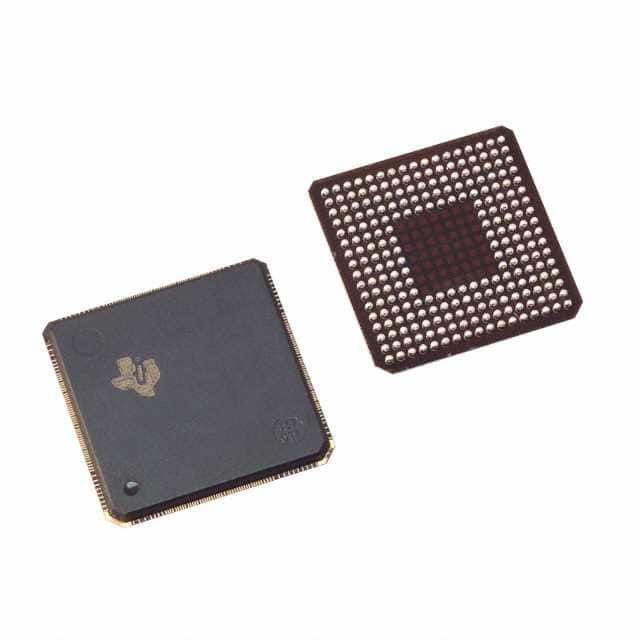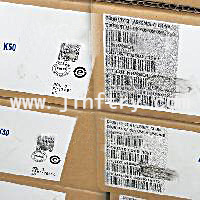What is SM32VC5510AGGWA2EP,SM32VC5510AGGWA2EP Datasheet


What is SM32VC5510AGGWA2EP
Texas Instruments Part Number SM32VC5510AGGWA2EP(Embedded - DSP (Digital Signal Processors)), developed and manufactured by Texas Instruments, distributed globally by Jinftry. We distribute various electronic components from world-renowned brands and provide one-stop services, making us a trusted global electronic component distributor.
SM32VC5510AGGWA2EP is one of the part numbers distributed by Jinftry, and you can learn about its specifications/configurations, package/case, Datasheet, and other information here. Electronic components are affected by supply and demand, and prices fluctuate frequently. If you have a demand, please do not hesitate to send us an RFQ or email us immediately [email protected] Please inquire about the real-time unit price, Data Code, Lead time, payment terms, and any other information you would like to know. We will do our best to provide you with a quotation and reply as soon as possible.
SM32VC5510AGGWA2EP Specifications
- Part NumberSM32VC5510AGGWA2EP
- CategoryEmbedded - DSP (Digital Signal Processors)
- ManufacturerTexas Instruments
- DescriptionIC DSP FIXED-POINT 240-BGA
- PackageTray
- SeriesTMS320C55x
- TypeFixed Point
- InterfaceHost Interface, McBSP
- Operating Temperature-40°C ~ 85°C (TC)
- Mounting TypeSurface Mount
- Package / Case240-LFBGA
- Supplier Device Package240-BGA MICROSTAR (15x15)
- Clock Rate200MHz
- Non-Volatile MemoryROM (32kB)
- On-Chip RAM344kB
- Voltage - I/O3.30V
- Voltage - Core1.60V
- Package_case240-LFBGA
Application of SM32VC5510AGGWA2EP
SM32VC5510AGGWA2EP Datasheet
SM32VC5510AGGWA2EP Datasheet , Tray,TMS320C55x,Fixed Point,Host Interface, McBSP,-40°C ~ 85°C (TC),Surface Mount,240-LFBGA,240-BGA MICROSTAR (15x15),200MHz,ROM (32kB),344kB,3.30V,1.60V
SM32VC5510AGGWA2EP Classification
Embedded - DSP (Digital Signal Processors)
FAQ about Embedded - DSP (Digital Signal Processors)
-
1. What is embedded DSP?
Embedded Digital Signal Processor (EDSP) is a processor specially used for signal processing. It has been specially designed in terms of system structure and instruction algorithm, and has high compilation efficiency and instruction execution speed. Embedded DSP processors are good at high-speed implementation of various digital signal processing operations, such as digital filtering, spectrum analysis, etc.
Embedded DSP processors have been specially designed for system structure and instructions, making them suitable for executing digital signal processing algorithms, with high compilation efficiency and high instruction execution speed. This special design includes the optimization of DSP hardware structure and instructions, so that it can efficiently handle complex signal processing tasks. -
2. What is built-in DSP?
Built-in DSP is a technology that combines digital signal processing (DSP) functions with power amplifiers. It not only has the power amplification function of traditional amplifiers, but also accurately processes and adjusts audio signals through DSP chips to provide a higher quality music experience.
The core advantage of built-in DSP lies in its powerful audio processing capabilities. Through DSP technology, audio signals can be optimized and managed to achieve active frequency division, delay processing, EQ debugging and other functions, thereby improving the performance of the audio system and making the sound clearer and more pleasant to listen to.In addition, DSP amplifiers also support parameter adjustment through computers, mobile phones and other devices, providing more flexible audio management solutions. -
3. What is DSP in microcontrollers?
DSP (Digital Signal Processor) is a microprocessor specifically used to process digital signals. It is different from the traditional CPU (Central Processing Unit). DSP is mainly used in occasions that require a large number of floating-point operations, such as communications, audio processing, image processing and other fields.
The working principle of DSP is to convert the received analog signal into a digital signal, and then process and analyze these digital signals. DSP chip adopts Harvard structure, that is, the program and data are stored separately, and has a dedicated hardware multiplier, which can quickly implement various digital signal processing algorithms.







